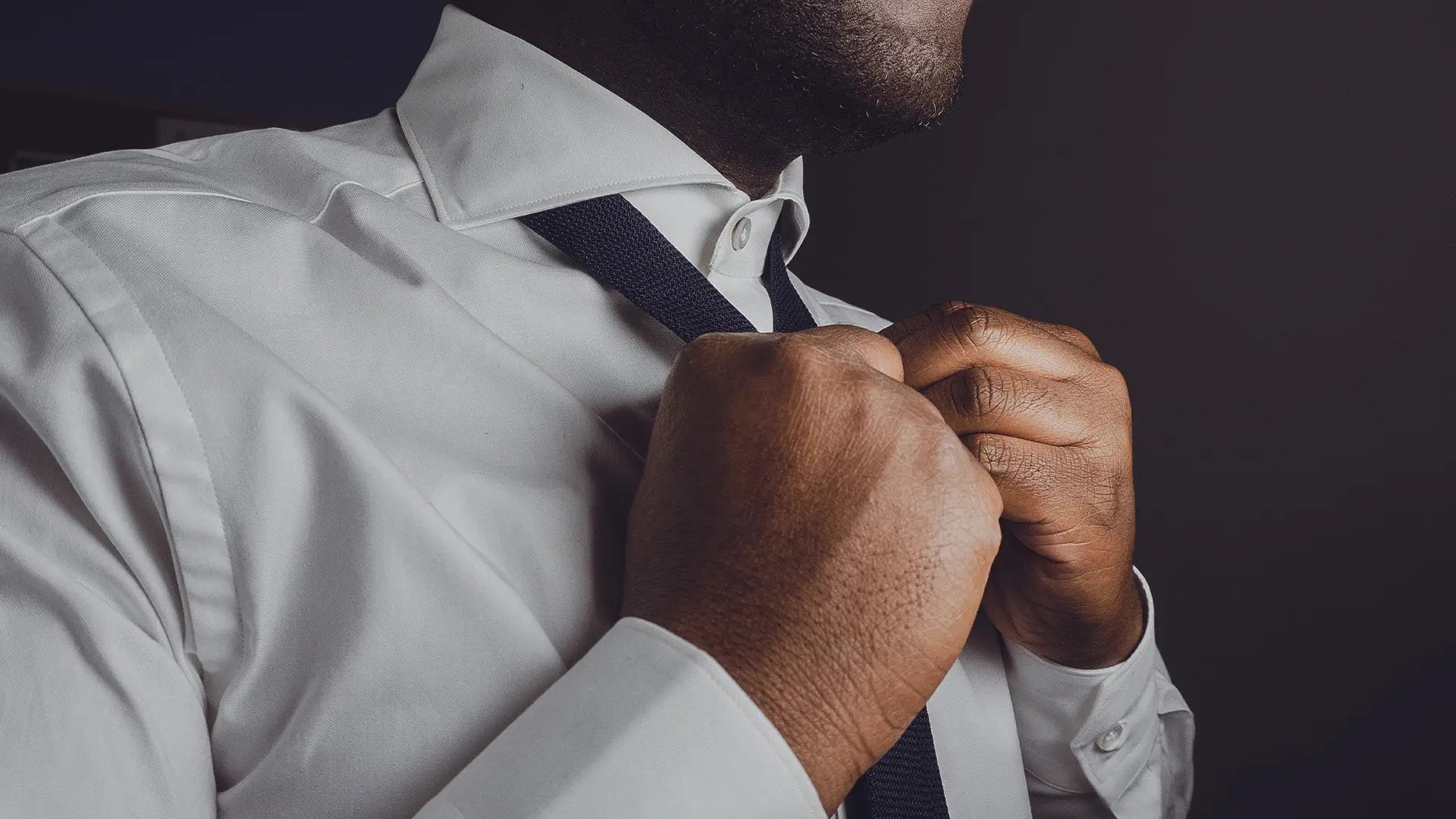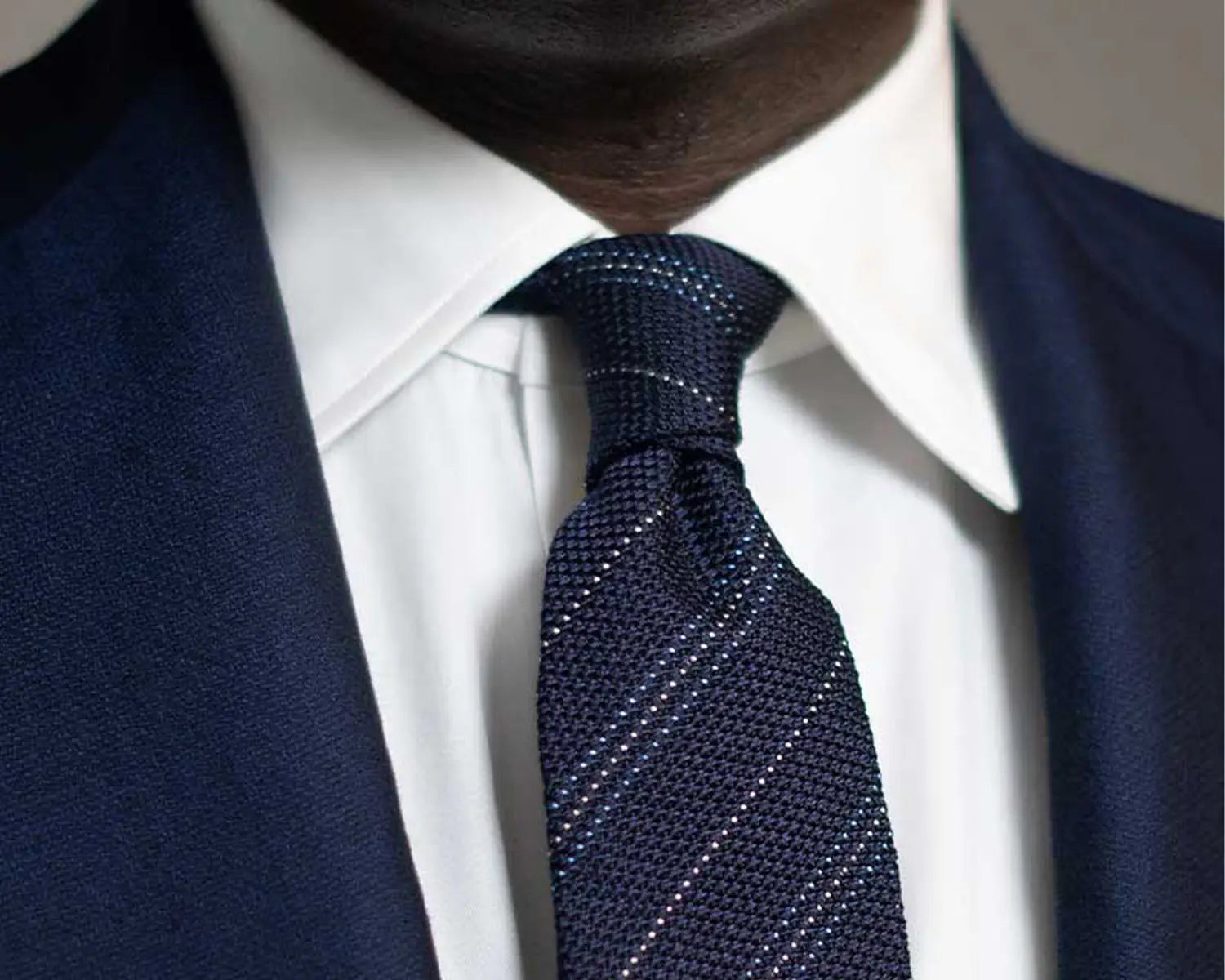
The Dress Shirt Guide for the Modern Professional
Unlock the secrets to effortless style with our comprehensive guide to dress shirts. Learn how to pick the best fit, fabric, and features for any occasion and elevate your look to the next level.
Image Credit: Aklasu
You can't live without one. A dress shirt is an essential part of a gentleman's wardrobe. You wear one for work, and you wear it for a night out on the town. No matter the occasion, you want to look your best in your dress shirt.
But with so many options, picking one feels overwhelming. It doesn't have to be. Follow our dress shirt guide to always look sharp at meetings and elegant for special events.
Like other pieces of clothing, the ideal dress shirt that radiates timeless style starts with getting the right fit.
3 Tips for Fitting Your Dress Shirt

Off-the-rack dress shirt measurements vary depending on the brand. You'll also see and hear different terms for dress shirt fit. You can get a regular fit, classic fit, modern, slim, and other variations in between. Simply put, these fit styles refer to measurement proportions. Regardless of the type of 'fit' you go with, the following tips will get you on the right track.
Rule #1: Wear What Fits Your Body - Don't try to squeeze into a slim fit if you're a little bulkier. Don't swim in fabric if you're naturally built like a long-distance runner. Buy a shirt that speaks to your unique body type.
Rule #2: The One-Finger Rule - Pay attention to the size of the collar. When you try the shirt on, do up the top button. Put a finger between your neck and the collar. If your finger comfortably fits, you're golden. Keep looking if two fingers fit because the collar's too big for you.
Rule #3: Sleeves Should be the Right Length - This is so that the shirt's cuff does not creep past the hinge of the wrist When fully buttoned (including cuffs) and with your arms relaxed, the sleeves should reach just above the hinge of your wrist. This approach allows for greater mobility without your shirt getting in the way and ensures that cuffs are appropriately sized for your wrist.
Fit comes first when you choose a dress shirt. Move around. See how the shirt feels on you as you twist, turn, sit and stand. It should be close to your body without feeling tight in the wrong places. It should feel comfortable without the excess fabric. It's important to note that we can't all wear off-the-rack garments. In special cases, the best approach is to have a made-to-measure or bespoke garment made. Read more about our approach to fit in our Pillars of Style: Fit ebook.
Now that you know some basics get a fine-fitting dress shirt let's talk about some features that kick your style up another level.
The Two Collar Styles You Need to Know
Like the different types of fit, there are many collar styles to choose from. The straight point, the spread, the long and short button-down make choosing a collar challenging. Our advice is to keep it simple. Here are the two collar styles you need to home in on:

The Semi-Spread - It's not too fashion-forward, and it doesn't scream old-school "Wall Street" either. It's not too wide or too narrow. It's just right. It'll work with your different styles of suits and ties.

The Cutaway - If you want to make more of a statement, the cutaway collar isn't as safe as the semi-spread. It takes a more extreme angle that allows your tie to peak a little under your collar.
Keep it Subtle with Colours and Patterns

We see more gingham and plaid dress shirts at the office these days. They pack a punch to a work wardrobe, but they can overshadow your outfit as a whole. We suggest keeping it subtle with your dress shirt colours and patterns to stay with a classic and timeless aesthetic.
White or Blue - A crisp, high-quality cotton dress shirt in light blue or white adds richness to your outfit. They'll complement your navy and grey suits while giving you the freedom to add a splash of colour with a tie or cufflinks.
Subtle Patterns - Thin pinstripes or a light windowpane dress shirt can add dimension to your outfit. Just remember to make sure it's subtle. Anything too heavy-handed can offset the balance you're trying to create with your outfit.
We've discussed fit, collar, colours and patterns. Surely, now you can go shop for a new dress shirt. Hold on a moment. There are a few more things worth mentioning.
The Details: Buttons, Pockets and Cuffs

We've talked about the foundations of picking a great dress shirt for you, now let's discuss the finishing details.
Cuffs - You'll likely encounter the barrel cuff in your shopping since it's the most common. You may also find French cuffs or convertible cuffs where cufflinks are required. The choice is up to you.
Buttons - Plastic buttons are most common. Some high-quality shirts will have high-quality buttons made of Mother of Pearl. They add depth and richness to a shirt, but you'll have to decide if the detail is worth the uptick in price.
Pockets - Not many people use the shirt pocket. It adds depth and texture, but we could do without it. We'll keep our pens in our inside jacket pocket instead.
Getting the perfect dress shirt for you takes time and a little effort. But knowing what to look for makes for a happier and more efficient shopping experience. Plus, you'll end up with a stylish dress shirt that will make you look sharp for years.













